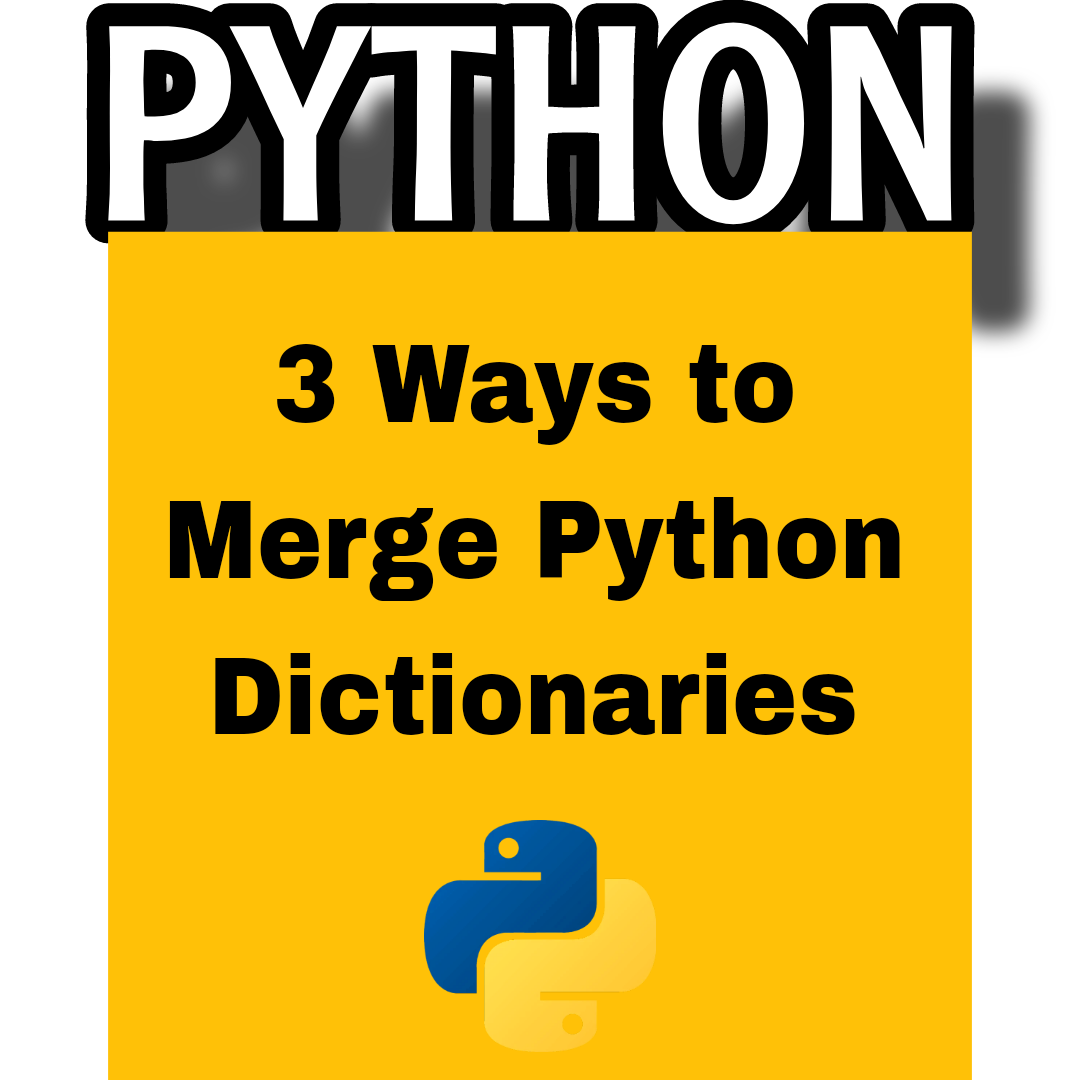3 Ways to Merge Python Dictionaries

Learn the most efficient methods to combine Python dictionaries
Introduction
Merging dictionaries is a common task in Python. Whether you're working with configurations or data aggregation, Python offers multiple ways to merge dictionaries efficiently. In this post, we'll walk through three popular methods for combining dictionaries.
1. Using the update() Method
The update() method is one of the simplest ways to merge two dictionaries. It updates the original dictionary with the key-value pairs from another dictionary.
dict1 = {'a': 1, 'b': 2}
dict2 = {'b': 3, 'c': 4}
# Merging dictionaries using update()
dict1.update(dict2)
print(dict1)Output:
{'a': 1, 'b': 3, 'c': 4}The update() method directly modifies the first dictionary. It’s best used when you want to make in-place changes rather than creating a new dictionary.
2. Using the ** Operator (Python 3.5+)
Introduced in Python 3.5, the ** operator provides a more elegant way to merge dictionaries by unpacking them. This method creates a new dictionary while keeping the original dictionaries unchanged.
dict1 = {'a': 1, 'b': 2}
dict2 = {'b': 3, 'c': 4}
# Merging dictionaries using the ** operator
merged_dict = {**dict1, **dict2}
print(merged_dict)Output:
{'a': 1, 'b': 3, 'c': 4}With this method, a new dictionary is created, making it ideal when you don’t want to modify the original data.
3. Using the | Operator (Python 3.9+)
The | operator is the latest and most readable way to merge dictionaries, introduced in Python 3.9. Like the ** operator, it creates a new dictionary, leaving the originals unchanged.
dict1 = {'a': 1, 'b': 2}
dict2 = {'b': 3, 'c': 4}
# Merging dictionaries using the | operator
merged_dict = dict1 | dict2
print(merged_dict)Output:
{'a': 1, 'b': 3, 'c': 4}This method is particularly useful for modern Python codebases and provides the cleanest syntax for merging dictionaries.
Conclusion
Each method for merging dictionaries has its own use case:
update(): Use this when you want to modify an existing dictionary.**Operator: Best for creating a new dictionary without changing the originals.|Operator: The most modern and readable option, available from Python 3.9+.
Choose the method that best fits your project and Python version. Happy coding!
Created on Sept. 20, 2024, 10:40 a.m.